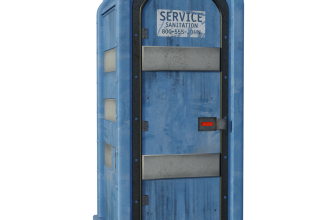Understanding when your baby will start crawling is an exciting and important milestone in early childhood development. Crawling marks the first stage where infants gain independent mobility, opening new doors to exploring their environment and enhancing their physical coordination. While the average baby begins to crawl around 8 months old, each child follows a unique developmental path influenced by various factors. Recognizing the signs leading to this milestone can help parents support their little ones effectively and patiently. It’s essential to remember that crawling is just one of many steps in a baby’s growth, with some babies skipping crawling altogether and moving directly to walking.
The journey to crawling begins much earlier than the actual movement on all fours. From muscle strengthening in tummy time to mastering coordination, babies go through several stages that prepare them for crawling. Additionally, the environment plays a vital role, as safe and stimulating spaces encourage babies to practice moving. When a baby starts crawling, new safety challenges emerge; thus, parents must childproof their homes to keep curious explorers secure.
This article will explore key questions such as the typical age range for crawling, behaviors indicating an upcoming crawl, reasons why some babies may delay or skip crawling, and strategies to encourage this motor milestone. We will also highlight safety tips for crawling babies, product recommendations for supportive and enjoyable crawling experiences, including trusted brands like BabyBjorn, Graco, and Fisher-Price, and helpful parenting resources. Whether you’re a new parent eager to witness your baby’s first crawl or seeking advice for a late crawler, this guide has you covered with expert insights and practical advice.
Understanding the Typical Age Range: When Does My Baby Start Crawling?
The timing of when babies begin crawling varies significantly. On average, infants start crawling between 7 and 10 months, but this can range from as early as 6 months to as late as 12 months. Importantly, every baby develops at their own pace, influenced by individual temperament, physical readiness, and environmental exposure.
Most babies will progress through several developmental stages before crawling, including rolling over, pushing up in tummy time, and scooting. Parents may notice early forward motion attempts called ‚commando crawling‘ before the classic hands-and-knees crawl becomes comfortable.
To give parents a clearer picture, here’s a typical timeline of crawling readiness stages:
- 3 to 5 months: Strengthening neck and upper body through tummy time
- 5 to 7 months: Pushing up on arms, rolling over, beginning to pivot on belly (commando crawling phase)
- 7 to 10 months: Transitioning to hands-and-knees and moving forwards and backwards
- 10 to 12 months: Mastering crawling or sometimes skipping it to pull to stand and walk
While this overview offers a helpful guide, developmental milestones vary widely. Some babies may crawl late or choose alternative methods like scooting on their bottom or rolling to get around. None of these variations inherently indicate problems, especially if your child shows other signs of healthy development like social engagement and communication attempts.
According to a comprehensive development calendar referenced by pediatric experts, the crucial element is providing plenty of opportunities for movement rather than focusing strictly on the timing. Products such as Fisher-Price play mats or Skip Hop activity gyms can create ideal spaces for babies to practice muscle control and support movement naturally.
| Stage | Age Range | Key Developmental Milestone |
|---|---|---|
| Tummy Time | 3-5 months | Neck and upper body muscle strengthening |
| Commando Crawling | 5-7 months | Forward scooting on belly using arms |
| Hands-and-Knees Crawling | 7-10 months | Coordinated movement of opposite arm and leg |
| Pulling Up & Standing | 10-12 months | Precursor to walking and independent mobility |
Factors Influencing When Babies Start Crawling
Several factors affect when a baby will begin to crawl:
- Physical readiness: Muscle strength development, especially in the neck, shoulders, arms, and legs.
- Personality and temperament: Some babies are naturally more exploratory and keen on mobility; others take a more relaxed approach.
- Environment: Safe spaces with enough room and sensory stimulation encourage early crawling attempts. Using brands like BabyGanics can ensure a safe and toxin-free area.
- Health conditions: Occasionally, neurological or muscular issues may cause delayed crawling; consulting pediatricians for concerns is crucial.
Discover more about crawling age ranges and tips on supporting your baby’s development.
Recognizing Signs That Your Baby Will Soon Crawl
Before babies start crawling, many developmental behaviors hint at their readiness. Careful observation of these signs helps parents respond with encouragement and appropriate safety preparations.
Key signs include:
- Rolling from back to tummy and vice versa: Essential muscle strengthening that precedes crawling.
- Propping up on arms: Babies practicing pushing their bodies up, gaining arm strength.
- Rocking on hands and knees: The classic „get ready“ position showing balance and coordination beginning to take shape.
- Trying to move forward while lying on the belly: Early mobility efforts often present as crawling backward or scooting in a less coordinated way.
- Pulling up to stand on furniture: Indicates muscular strength and confidence building toward walking stages.
These behaviors reflect growing motor skills and brain coordination. For instance, the complex movement of crawling enhances the communication between the two brain hemispheres, having lasting cognitive benefits.
Parents can stimulate these signs positively by incorporating activities that foster strength and curiosity:
- Encourage tummy time frequently using soft surfaces like a BabyBjorn mat.
- Use toys from Carter’s or Chicco placed slightly out of reach to motivate movement.
- Create playful obstacle courses with cushions and soft toys to practice climbing and balance.
Why Some Babies Skip Crawling Altogether
While crawling is typical, approximately 10-15% of babies bypass this stage. These infants might begin moving by scooting on their bottoms, rolling, or pulling themselves directly to standing. Parents often worry if skipping crawling affects development, but research suggests that skipping crawling does not hinder intelligence or motor coordination in most cases.
This deviation from the norm reflects personal preference, physical personality, or sometimes environmental adaptations. For example, some babies develop reluctance to crawl if their clothing restricts movement, or if the environment lacks safe spaces that inspire mobility.
Making sure babies wear comfortable clothing that doesn’t restrict leg movements, like those from Carter’s, and ensuring well-maintained crawling spaces with trusted brand products like Munchkin safety gates, can support natural curiosity and movement exploration.
Learn more about developmental variations and how to best support your child.
Creating a Safe Environment: Protecting Your Crawling Baby
Once babies start crawling, curiosity can quickly lead them into danger. Babies suddenly mobile explore everywhere, so it’s vital to ensure the surroundings are safe and secure. Childproofing becomes a priority.
Here are key safety actions to take:
- Remove hazardous objects: Secure items like heavy vases, sharp utensils, or hot pots out of reach.
- Lock away chemicals and medicines: Brands like BabyGanics offer non-toxic alternatives, but storing dangerous substances away remains essential.
- Install stair gates: Gates from Graco or Chicco can prevent falls by restricting stair access.
- Cover electrical outlets: Use child-safe covers to block plugs and prevent shocks.
- Padding furniture edges: Use corner guards to soften sharp furniture edges, often purchased from Fisher-Price or Skip Hop.
- Monitor water sources: Pools, bathtubs, and garden ponds present drowning hazards; constant supervision is mandatory.
- Supervised play areas: Use play yards or safe zones where babies can crawl safely under watchful eyes.
Proper safety measures not only prevent accidents but also give parents peace of mind, enabling babies to develop confidence and physical skills through exploration.
How to Encourage and Support Your Baby’s Crawling Development
Crawling cannot be forced or taught directly; it naturally emerges when a baby’s muscles and nervous system are ready. Nonetheless, parents can foster ideal circumstances and offer motivation to help their baby reach this milestone comfortably.
Helpful strategies include:
- Frequent tummy time: Allowing the baby to build essential muscle strength and motor control.
- Offering variety in textures: Soft blankets, rugs, and gentle toys help develop sensory awareness and motor skills.
- Encouraging exploration: Position exciting playthings slightly out of reach to inspire crawling efforts, for example with BabyBjorn or Chicco toys.
- Comfortable attire: Choose non-restrictive clothing like stretchy pants from Carter’s or soft socks from Huggies to allow free movement.
- Interactive play: Engage in crawling games or create mini obstacle courses using cushions and tunnels to make movement enjoyable.
Parents should always observe their baby’s cues and avoid overpressuring. Crawling is hard work, and rest periods are just as vital as practice times.
| Support Method | Description | Recommended Products |
|---|---|---|
| Tummy Time | Daily practice to strengthen core, neck, and arm muscles | BabyBjorn Tummy Time Mat, Fisher-Price Playsets |
| Motivational Toys | Objects placed just out of reach to encourage movement | Carter’s Plush Toys, Chicco Rattles |
| Safe Clothing | Allow free range of motion without constriction | Carter’s Stretchy Pants, Huggies Soft Socks |
| Environment Preparation | Childproofed spaces for safe exploration | Graco Safety Gates, Munchkin Outlet Covers |
FAQ: Addressing Common Questions About Baby Crawling
- Q: At what age should I be concerned if my baby is not crawling?
A: While some babies skip crawling, if your baby is approaching 12 months and shows little mobility or muscle strength, consult a pediatrician for an evaluation. - Q: Does skipping crawling delay other motor milestones?
A: Skipping crawling does not usually delay walking or other motor skills. Some babies develop alternative movement methods that are equally effective. - Q: How can I make crawling safer at home?
A: Childproof critical areas by securing stairs, covering electrical outlets, removing hazards, and supervising your baby at all times during exploration. - Q: Are there toys that encourage crawling?
A: Yes, toys that encourage reaching and movement, such as those from Chicco, Carter’s, or Fisher-Price, stimulate crawling development. - Q: What if my baby crawls backwards or scoots instead of the usual crawl?
A: This is normal as babies develop their coordination skills. As they progress, forward crawling typically emerges naturally.


